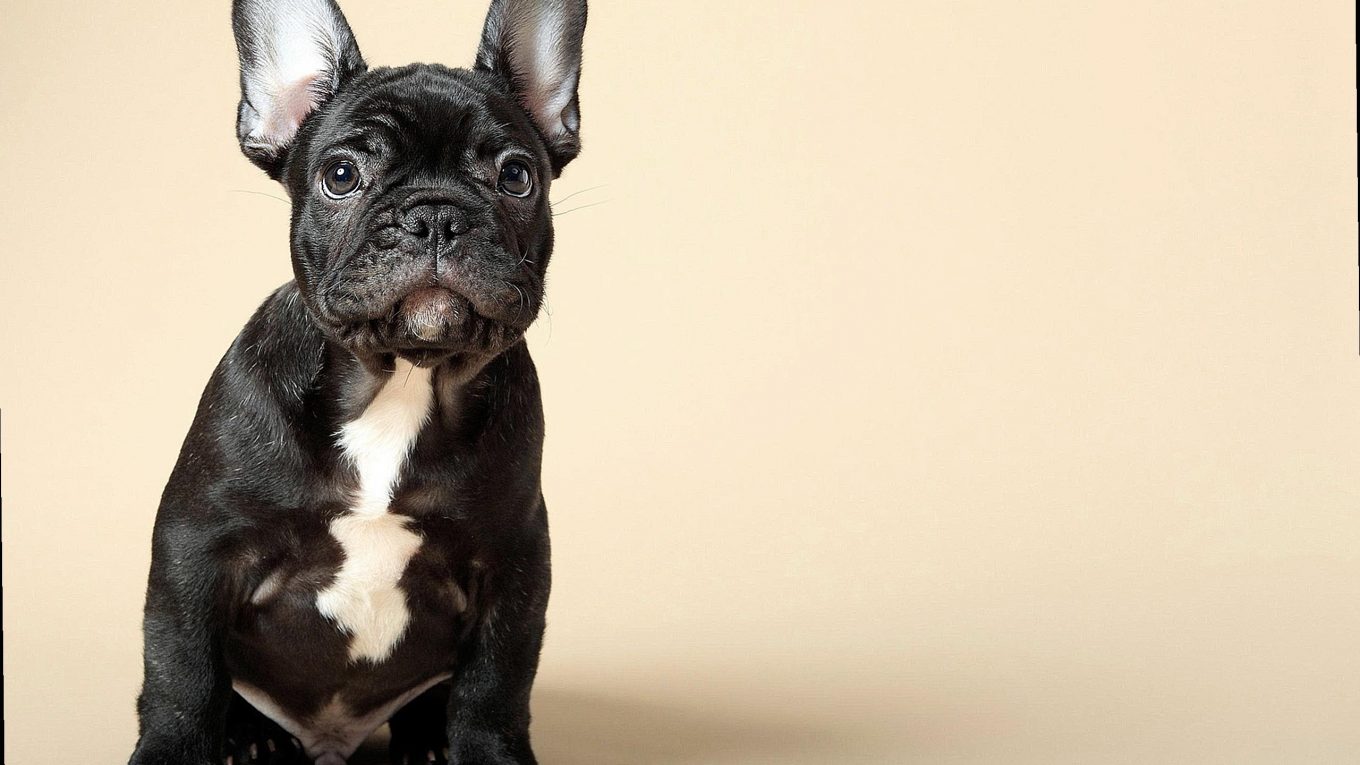Do Breeders Cut Frenchies Tails?
French Bulldogs, those mischievous little charmers with their bat-like ears and playful personalities, have stolen the hearts of dog lovers across the globe. But here’s a puzzler for you: why do some Frenchies flaunt floppy tails while others wiggle around with stumpy ones? The tail debate surrounding these lovable canines has ignited controversy, and we’re here to dig deep into the truth about whether breeders actually cut their tails.
Tail docking, that surgical snip-snip removing a dog’s tail, has sparked fiery discussions for ages. While it’s true that certain breeds occasionally undergo cosmetic tail docking for various reasons, French Bulldogs don’t typically fall into this category. You see, the breed standard for Frenchies calls for a “short, straight, or screwed tail,” but it’s crucial to distinguish between natural genetic variation and breeders taking matters into their own hands.
Prepare yourself for an exhilarating journey through the captivating universe of French Bulldog tail genetics. We’ll dive into the history of tail docking practices and uncover whether breeders are still wielding scissors today. Along the way, we’ll debunk myths, shed light on the genetic factors dictating tail length, and unravel the motivations behind tail docking within the canine breeding community.
So buckle up and get ready to embark on an adventure into the enigmatic world of French Bulldog tails. Our mission is to separate fact from fiction and empower dog lovers everywhere with genuine knowledge about this contentious topic. Let’s wag our way through this tale and discover what truly lies behind those adorable little rumps that bring endless joy to our lives.
What Is Tail Docking?
Contents
- 1 What Is Tail Docking?
- 2 French Bulldogs and Their Natural Tails
- 3 Unethical Breeders and Tail Docking
- 4 Responsible Breeders and Their Priorities
- 5 The Controversy Surrounding Tail Docking
- 6 Potential Health Risks of Tail Docking
- 7 Legislation Banning or Restricting Tail Docking
- 8 Congenital Conditions Affecting French Bulldog Tails
- 9 Conclusion
Well, you’ve come to the right place. In this blog post, we’ll delve into the controversial practice of tail docking and its relevance to French Bulldogs. So grab a cup of coffee, sit back, and let’s explore this topic together.
What is Tail Docking?
Tail docking is a procedure that involves removing a portion of a dog’s tail. It can be done for practical reasons, like preventing injuries in working dogs, or for purely cosmetic purposes. However, it’s important to note that French Bulldogs traditionally do not have docked tails.
The Controversy:
Tail docking is a hot topic in the animal welfare community. Many organizations argue that it’s an unnecessary cosmetic procedure that can cause pain and distress to dogs. They emphasize the importance of prioritizing the well-being and natural appearance of our furry companions.
Why French Bulldogs Don’t Typically Have Docked Tails:
French Bulldogs are born with naturally short tails that are straight or slightly curved. Their breed standards do not require tail docking, which means responsible breeders generally do not engage in this practice. Reputable breeders focus on breeding healthy and well-tempered French Bulldogs rather than altering their appearance through unnecessary procedures.
Potential Health Concerns:
Aside from ethical concerns, studies suggest that tail docking can lead to health issues like chronic pain, nerve damage, and increased risk of infection. These potential risks further discourage the practice of tail docking.
Choosing a Responsible Breeder:
When looking to bring a French Bulldog into your home, it’s crucial to choose a reputable breeder who prioritizes the health and well-being of their dogs. Responsible breeders adhere to breed standards and do not engage in unnecessary procedures like tail docking. By doing your research and selecting a trustworthy breeder, you can ensure the best possible outcome for both you and your Frenchie.
Tail docking is a controversial topic, but it’s important to remember that French Bulldogs typically do not have docked tails. Responsible breeders prioritize the health and well-being of their dogs, focusing on breeding Frenchies with natural appearances. As a responsible pet owner, it’s crucial to consider all aspects before making any decisions about tail docking for your beloved French Bulldog. Remember, the well-being of our furry friends should always come first.
French Bulldogs and Their Natural Tails
French Bulldogs, with their adorable bat-like ears and compact bodies, have become one of the most popular breeds in recent years. One unique characteristic that sets them apart is their naturally short and straight tails.
In this comprehensive guide, we’ll delve into the reasons behind this distinctive trait, why tail docking is unnecessary, and how you can support responsible breeding practices to preserve the integrity of French Bulldogs’ natural tails.
Genetics and “Screw Tails”
French Bulldogs are born with their short tails due to their specific genetics. These lovable pups carry a gene that causes their tails to be naturally short, often referred to as “screw tails.” This genetic trait has been selectively bred over generations to maintain the characteristic short tail in French Bulldogs. Responsible breeders prioritize dogs with the desired tail length when selecting breeding pairs, ensuring that this feature is passed down to future generations.
The Controversy of Tail Docking
Tail docking, the practice of removing a portion of a dog’s tail, is controversial and unnecessary for French Bulldogs. While some other breeds may have historically had their tails docked for practical purposes, such as preventing injuries in working dogs or conforming to breed standards, it has no such purpose for French Bulldogs.
Ethical breeders prioritize the health and well-being of their dogs and adhere to breed standards set by kennel clubs and breed associations. These standards typically include having naturally short and straight tails for French Bulldogs. Cutting or docking a French Bulldog’s tail is generally considered unnecessary and even illegal in many countries due to its cosmetic nature.
Choosing a Responsible Breeder
When searching for a French Bulldog puppy, it is essential to choose a reputable breeder who prioritizes the preservation of the breed’s natural characteristics. Here are some tips for finding a responsible breeder:
- Research: Start by researching local breeders who have a good reputation and adhere to breed standards.
- Visit the Breeder: Make an appointment to visit the breeder’s facility or home. Observe the living conditions, health of the dogs, and interaction between the breeder and their animals.
- Ask Questions: Inquire about the breeding practices, health testing, and whether any tail docking has been performed in the past.
- Check References: Request references from previous puppy buyers to ensure they had a positive experience with the breeder.
By supporting responsible breeding practices, you can help promote the preservation of French Bulldogs’ natural tails and contribute to the overall well-being of the breed.
Unethical Breeders and Tail Docking
French Bulldogs are known for their adorable appearance, including their naturally short and straight tails. However, some breeders engage in the unethical practice of tail docking, which involves removing a portion of the dog’s tail for various reasons, such as breed standards or aesthetic purposes.
In this blog post, we will explore the ethical issues associated with tail docking in French Bulldogs and discuss how to prevent them.
The Painful Truth
One of the main concerns with unethical breeders is their lack of regard for the well-being of the dogs. When tail docking is performed, it is typically done when the puppies are just a few days old, without anesthesia or proper pain management. This can cause unnecessary pain and distress to the puppies, who are unable to understand why this painful procedure is being done to them. Some may even experience complications or infections as a result of the procedure.
Responsible breeders, on the other hand, prioritize the health and welfare of their dogs and will not engage in such practices. They understand that tail docking is unnecessary and can cause harm to the puppies. Instead, they focus on breeding healthy and well-rounded French Bulldogs without resorting to cosmetic alterations.
The Ripple Effect
Tail docking is not an isolated issue when it comes to unethical breeders. These breeders may also engage in other questionable breeding practices, such as overbreeding or breeding dogs with known genetic health issues. They prioritize quantity over quality, leading to an increased risk of health problems in their puppies.
On the other hand, responsible breeders carefully select breeding pairs based on health, temperament, and conformation. They aim to produce healthy and happy French Bulldogs that meet breed standards without compromising their well-being.
Finding a Responsible Breeder
To prevent supporting unethical breeders and their harmful practices, it is important for potential French Bulldog owners to be aware and educated. Here are some tips to help you find a responsible breeder:
- Do your research: Take the time to learn about the breed, its characteristics, and potential health issues. This will allow you to ask informed questions when speaking with breeders.
- Visit the breeder: A responsible breeder will welcome visitors and allow you to see the living conditions of their dogs. Pay attention to cleanliness, overall health, and the breeder’s knowledge and passion for the breed.
- Ask for health clearances: Responsible breeders conduct health tests on their breeding dogs to ensure they are free from genetic health issues. Ask for documentation of these tests before making a decision.
- Get referrals: Reach out to local breed clubs or veterinarians for recommendations on reputable breeders in your area.
By purchasing a French Bulldog puppy from a responsible breeder, you are supporting ethical practices and ensuring the well-being of these lovable companions.
Responsible Breeders and Their Priorities
French Bulldogs, with their adorable bat-like ears and playful personalities, have become increasingly popular as family pets. However, with rising demand comes the unfortunate reality of unethical breeding practices. That’s why it’s crucial to understand the priorities of responsible breeders when it comes to these lovable pups.
Health is Paramount
Responsible breeders prioritize the health and well-being of their French Bulldogs above all else. Their main goal is to produce healthy, happy puppies that conform to the breed standards. This means that they go the extra mile to ensure that their breeding dogs are free from hereditary diseases that may be present in the breed. They accomplish this through rigorous genetic health testing for conditions like hip dysplasia, brachycephalic airway syndrome, and genetic eye diseases.
Socialization Matters
French Bulldogs are known for their sociable nature, and responsible breeders understand the importance of proper socialization from an early age. They expose their puppies to various stimuli and experiences, such as different sounds, surfaces, and people. This helps them develop into well-rounded and confident dogs who can adapt to different environments.

Comfort and Care for Breeding Dogs
Responsible breeders consider their breeding dogs as cherished family members rather than mere breeding machines. They provide them with comfortable living conditions, nutritious diets, regular exercise, and top-notch veterinary care. By ensuring the physical and emotional well-being of their breeding dogs, responsible breeders create a foundation for healthy puppies.
Finding the Perfect Homes
A responsible breeder’s job doesn’t end when the puppies are born. They prioritize finding suitable homes for their French Bulldog puppies. This involves carefully screening potential buyers to ensure that the puppies will be placed in loving and responsible homes where they will receive proper care and attention.
No Tail Docking
Tail docking, the practice of removing a portion of a puppy’s tail, is a controversial topic in the dog breeding community. While some breed standards call for docked tails in certain breeds, this is not the case for French Bulldogs. Responsible breeders who follow ethical practices do not cut the tails of their French Bulldogs. They believe in preserving the natural appearance and functionality of the dog’s tail.
The Controversy Surrounding Tail Docking
The Great Tail Docking Debate: What French Bulldog Owners Need to Know
Ah, the great tail docking debate. It’s a controversial topic that has divided dog lovers for years. As a potential French Bulldog owner, it’s important to understand both sides of the argument before making a decision about your pup’s tail.
To Dock or Not to Dock?
Tail docking refers to the removal of a portion of a dog’s tail. Some argue that it’s necessary for certain breeds, like French Bulldogs, to meet breed standards and prevent potential health issues. Others believe it’s an unnecessary and painful procedure that can lead to complications.
Let’s Break It Down
Proponents of tail docking argue that it can prevent injuries or infections in working or hunting dogs. They claim that long tails can get caught or injured in the field, and docking eliminates this risk. On the other hand, opponents argue that tail docking is painful and can lead to chronic pain, infections, and behavioral problems.
The Experts Weigh In
The American Veterinary Medical Association (AVMA) and other veterinary organizations strongly oppose elective cosmetic surgeries like tail docking unless there is a clear medical necessity. They believe that dogs should be able to keep their tails intact, as nature intended.
Tail Docking Methods
Tail docking can be done through various methods, including surgical removal, rubber banding, or using a heated cauterizing tool. It’s important to note that some breeders may perform the procedure themselves, while others will only have it done by licensed veterinarians.

What Should You Do?
As a potential French Bulldog owner, it’s crucial to research and understand the stance of the breeder regarding tail docking before making a decision. Responsible breeders prioritize the well-being of their pups and may choose alternative practices such as selective breeding for naturally shorter tails.
Potential Health Risks of Tail Docking
Tail docking, a surgical procedure in which the tail of a dog is partially or completely removed, has been a subject of much debate among French Bulldog owners. While many believe it enhances the appearance of their furry friends, it is essential to be aware of the potential health risks associated with this cosmetic procedure. In this article, we will explore these risks to help you make an informed decision about tail docking.
- Infection: One of the main health risks of tail docking is infection. Without proper hygiene and care during and after the procedure, the surgical site can become infected. This can cause pain, discomfort, swelling, and even systemic illness in your French Bulldog.
- Neuromas: Another risk is the development of neuromas, abnormal growths of nerve tissue that can occur at the site where the tail was docked. These growths can cause chronic pain and sensitivity in your dog’s tail area, leading to discomfort and a decreased quality of life.
- Balance and Mobility Issues: The tail plays a crucial role in a dog’s ability to maintain balance and coordinate movements. Removing or altering the tail can disrupt this natural balance, making it difficult for your French Bulldog to navigate properly and potentially increasing the risk of injuries.
- Communication Difficulties: Dogs use their tails as a means of expressing emotions and intentions to other dogs. Without a full tail, French Bulldogs may have difficulty conveying important signals, leading to misunderstandings or conflicts during social interactions with other dogs.
- Psychological Effects: There is evidence suggesting that tail docking may have long-term psychological effects on dogs. Removing a natural part of their body can cause distress and anxiety, leading to behavioral issues such as fearfulness or aggression.
Legislation Banning or Restricting Tail Docking
As proud French Bulldog owners, we want what’s best for our furry friends. That’s why it’s essential to understand the rationale behind legislation banning or restricting tail docking and the potential penalties for illegal practices.
So, let’s dive into this topic and shed some light on why legislation matters when it comes to our Frenchies’ well-being.
Why the Fuss about Tail Docking?
Tail docking is the removal of a portion of a dog’s tail, often done for cosmetic reasons or to meet breed standards. However, this controversial practice has raised concerns about animal welfare and ethics. Many countries have recognized that tail docking is unnecessary and potentially harmful to dogs, leading them to implement legislation.
What Do the Regulations Say?
In countries like Australia, New Zealand, and most of Europe, tail docking is either entirely banned or tightly regulated. These regulations typically stipulate that only licensed veterinarians can perform the procedure, and only under specific circumstances, such as medical necessity or for the dog’s well-being. This ensures that tail docking is not done without proper expertise and consideration.
The Sting of Illegal Tail Docking
The penalties for illegal tail docking can be severe, ranging from hefty fines to imprisonment. These consequences are in place to deter individuals from engaging in this harmful practice and protect our French Bulldogs from unnecessary surgery and potential complications.
The Tail Tells a Tale
One crucial reason behind legislation is the growing understanding that dogs use their tails for communication and body language. Removing this vital part of their anatomy can lead to adverse effects on their well-being. Our Frenchies rely on their tails to express emotions like happiness, fear, or excitement. Without their tails intact, they might struggle to communicate effectively with us and other dogs.
Different Strokes for Different Folks
It’s essential to note that regulations regarding tail docking can vary between countries and even within different regions of the same country. Some places may have exemptions for certain working dog breeds or hunting dogs, where tail docking is considered necessary to prevent injuries in specific working environments. However, for our French Bulldogs, these exemptions are not applicable.
Stay Informed and Advocate
While legislation plays a crucial role in protecting our beloved Frenchies, it’s essential for us as owners to stay informed about the regulations in our specific region. By understanding the laws and spreading awareness, we can advocate for the well-being of French Bulldogs and ensure that tail docking remains a thing of the past.
Congenital Conditions Affecting French Bulldog Tails
French Bulldogs are beloved for their unique appearance, including their adorable tails. However, some French Bulldogs can be born with congenital conditions that affect their tails. In this article, we will explore the different congenital conditions that can affect French Bulldog tails, their potential impact on the dog’s health, and how responsible breeding practices can help mitigate these conditions.
Hemivertebrae:
Hemivertebrae is a common congenital condition that affects French Bulldog tails. This condition occurs when one or more vertebrae in the tail are not fully formed, resulting in a wedge-shaped appearance.
In severe cases, hemivertebrae can lead to spinal cord compression and neurological issues. It is important for owners to monitor their dogs for signs of pain or mobility issues and consult with a veterinarian for appropriate management.
Screw Tail:
Screw tail is another congenital condition that can affect French Bulldogs. This condition is characterized by a tightly twisted or curled tail, resembling a screw. While some cases may be mild and not cause any health problems, severe screw tail can lead to skin infections, pain, and difficulty in maintaining proper hygiene. Regular inspection and cleaning of the tail area are crucial to prevent complications.
Stumpy Tail:
Stumpy tail is a condition where the tail is significantly shorter than the standard length for the breed. Unlike hemivertebrae or screw tail, stumpy tail is typically considered a cosmetic issue rather than a medical concern. It does not pose any health risks to the dog and is generally well-tolerated.
Responsible Breeding Practices:
Breeders play a vital role in managing congenital conditions affecting French Bulldog tails. By selecting breeding pairs carefully and avoiding individuals with known tail abnormalities, breeders can help reduce the prevalence of these conditions in future generations. It is important for potential French Bulldog owners to research and choose a reputable breeder who prioritizes the health and well-being of their dogs.
Conclusion
In conclusion, it is important to note that breeders do not cut Frenchies’ tails. This practice has been deemed unethical and inhumane by various animal welfare organizations. French Bulldogs are born with naturally short tails or no tails at all, a characteristic that is inherent to the breed. Breeders who engage in tail docking are not only going against ethical guidelines but also risking the health and well-being of these beloved dogs.
By allowing French Bulldogs to keep their natural tail length, breeders are promoting a more humane approach to breeding. This not only preserves the integrity of the breed but also ensures that these dogs can live happy and comfortable lives without unnecessary surgical procedures.
It is crucial for potential Frenchie owners to be aware of this information and choose responsible breeders who prioritize the well-being of their dogs. By supporting ethical practices, we can contribute to a future where tail docking becomes a thing of the past for French Bulldogs and other breeds alike.
So let’s celebrate the unique charm and beauty of Frenchies’ natural tails, as they wag with joy and add an extra touch of character to these delightful companions.




